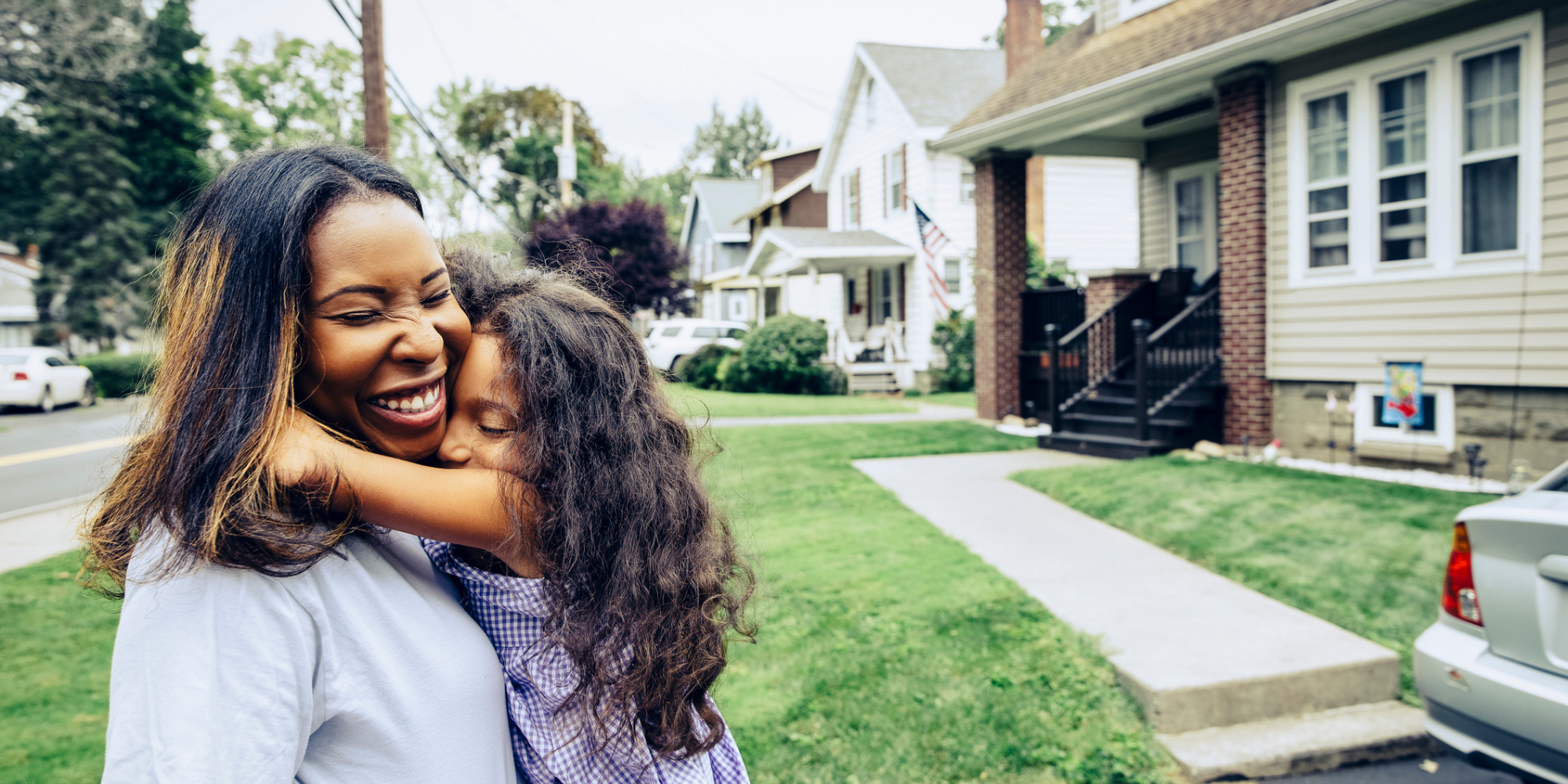It made recent headlines that single women are outpacing single men as homeowners: single women own 2.64 million more homes than single men in the U.S., accounting for nearly 13 percent of owner-occupied homes relative to single men’s 10 percent. This statistic, however, oversimplifies and disregards the obstacles and barriers that many women — particularly women of color — face in becoming homeowners. With stark racial disparities present in homeownership trends generally, many women of color in particular are left out of homeownership and the wealth-building potential that it brings. In 2019, while 70 percent of white female-headed households were homeowners, that figure falls to 59 percent, 45 percent, and just 40 percent for Asian, Hispanic and Black female-headed households respectively.
Women are disadvantaged as homeowners and renters. Both stigma and structural racism create added challenges for women pursuing a safe, stable and quality place to live. These challenges are even greater for transgender women who are at risk of additional discrimination. But cities and local leaders looking to support and protect residents’ rights have tools at their disposal to cultivate housing practices that are more inclusive to women.
Housing Challenges Faced by Women
Many women experience similar challenges, regardless of whether they are looking to rent or buy their home. Discrimination based on sex and familial status are among the most common fair housing complaints filed with federal agencies, along with discrimination based on disability and race. Complaints of harassment filed with those agencies have risen dramatically in recent years.
Additionally, certain factors contribute to the likelihood that women, on average, have less disposable income than men. For example, women are paid roughly 82 cents to the dollar for the same jobs as men, and childcare responsibilities can both limit paid working hours and bring additional expenses for many women. Women also make up a large share of workers in many industries that were hardest hit by the pandemic, such as retail and food service, and they have experienced a slower economic recovery. This persistent wage gap, childcare responsibilities and more can make finding and retaining stable housing difficult.
Barriers Faced in Buying a Home
Women homeowners — particularly those who are single or are people of color — often have lower incomes, fewer assets and greater debts, which can lower their likelihood of being approved for loans or getting the best loan terms. It was also technically legal for banks to refuse loans and credit to unmarried women until 1974, when the Equal Credit Opportunity Act was passed. Although women are generally better at paying their mortgages, they often face higher interest rates than men and can be subject to predatory lending practices known as “pinklining.” With all these factors combined, women tend to own lower-value homes than men. That said, race — along with income, education and household composition — continues as a key determinant of owning a home, separate from gender.
Barriers Faced in Maintaining Rental Housing
Women renters are arguably more vulnerable than their homeowner counterparts, and a greater share of women than men are renters. As tenants they are generally lower-income, with a larger share being women of color. They are more likely to spend a significant share of their income on rent, with almost half (45.4 percent) of female-headed renter households being rent burdened, compared to roughly a third (36.1 percent) of male-headed renter households.
Women are also at greater risk of eviction, with approximately 16 percent more women being evicted than men in recent years. The racial disparities here are stark: 36 percent more Black women are evicted than Black men, along with 9.6 percent more Latinx women than Latinx men. Housing stability challenges can compound for women and their families regardless of whether the eviction has legal basis, whether the case is settled, or even if it is dismissed — particularly given that women and women of color specifically disproportionately face eviction filings to begin with.
Local Approaches to Support Women through Housing
Affirmatively Further Fair Housing
The greatest tool at government’s disposal to ensure sufficient protections for women in the housing market is adequate enforcement of the Fair Housing Act. In addition to tracking and preventing explicit discrimination, local leaders should take action to disrupt patterns of segregation and instead foster inclusive communities. With resources provided by the U.S. Department of Housing and Urban Development (HUD), cities can also seek to partner with community organizations focused on fair housing practices, or can empower residents to easily submit complaints if they believe they are subject to discrimination, as Pittsburgh, PA has done through a streamlined online portal.
Alexandria, VA conducts annual fair housing tests that identify discrimination in rental practices, housing sales and mortgage lending. When potentially discriminatory practices are detected, sites are retested and if the identified issue repeats, a complaint is filed with the Alexandria Office of Human Rights. The Office of Housing pursues remedial actions for all problem sites, regardless of whether a complaint is filed or settled. For additional transparency, the city also released a summary report detailing its fair housing tests since 1990.
Provide Pathways to Homeownership
Homeownership continues to be one of the foundational strategies for wealth-building and a driver of upward mobility in America today. Fostering more equitable access to this critical steppingstone for all women will require lifting up down-payment assistance programs, similar to those operated for first-time homebuyers. Targeted efforts to improve women’s awareness of and access to these programs can serve to boost homeownership rates, particularly for women of color. Alternative homeownership models, such as shared equity and community land trusts, can also lower barriers to entry. Cities can also work in tandem with lenders to evaluate mortgage application requirements to provide more flexibility. This flexibility could be around work history requirements, such as accommodating periods of unemployment due to the pandemic or childcare responsibilities, or accounting for additional sources of income.
Target Housing Stability Efforts
Eviction disproportionately impacts communities of color and women in particular. Instituting robust eviction prevention programs and supports such as eviction diversion programs and emergency rental assistance and providing legal assistance can help keep families housed. Partnerships with local community organizations serving women can further the impact. By targeting these efforts to the communities at greatest risk — particularly women-led households — cities can more equitably and effectively stem the tide of evictions.
In Baltimore, MD, the local Eviction Prevention Program has operated out of the Mayor’s Office of Children & Family Success. From December 2020 to September 17, 2021, Baltimore issued $23.2 million in back-rent payments to landlords on behalf of tenants, assisting 4,653 households and preventing 1,068 evictions. Of these households, 44 percent were female-led. This assistance was paired with the launch of a Pandemic Rent Court Program that works with judges, landlords and tenants to apply for rental assistance on-site, avoiding trial, judgment, warrant and eviction. Legal services and financial assistance with relocation, security deposits and utilities have also been available, furthering the city’s holistic approach to supporting households.
What is Next For Cities
There is still a long way to go when it comes to ensuring that women — particularly women of color — can access safe and stable housing. Although women have made significant gains in homeownership in recent decades, this success is nuanced and threatened by the lasting negative economic impact of the pandemic on women and women of color, not to mention the vulnerable status of many female renters. Cities looking to drive more equitable homeownership opportunities and improve housing stability can consider implementing all tools and resources at their disposal, including using State and Local Fiscal Recovery Funds and ERA2 funds to strengthen the housing stability system infrastructure. This includes expanding or developing programs that meet specific needs and ensuring that all women can access existing supports. Women constituents and community organizations that serve women should be at the forefront of those discussions, identifying barriers to housing, and vetting possible solutions.
Learn About Direct Assistance
Interested in how NLC members can receive direct assistance in implementing a shared equity homeownership model? Learn more about the NLC Help Desk in partnership with Grounded Solutions. [Learn More]









